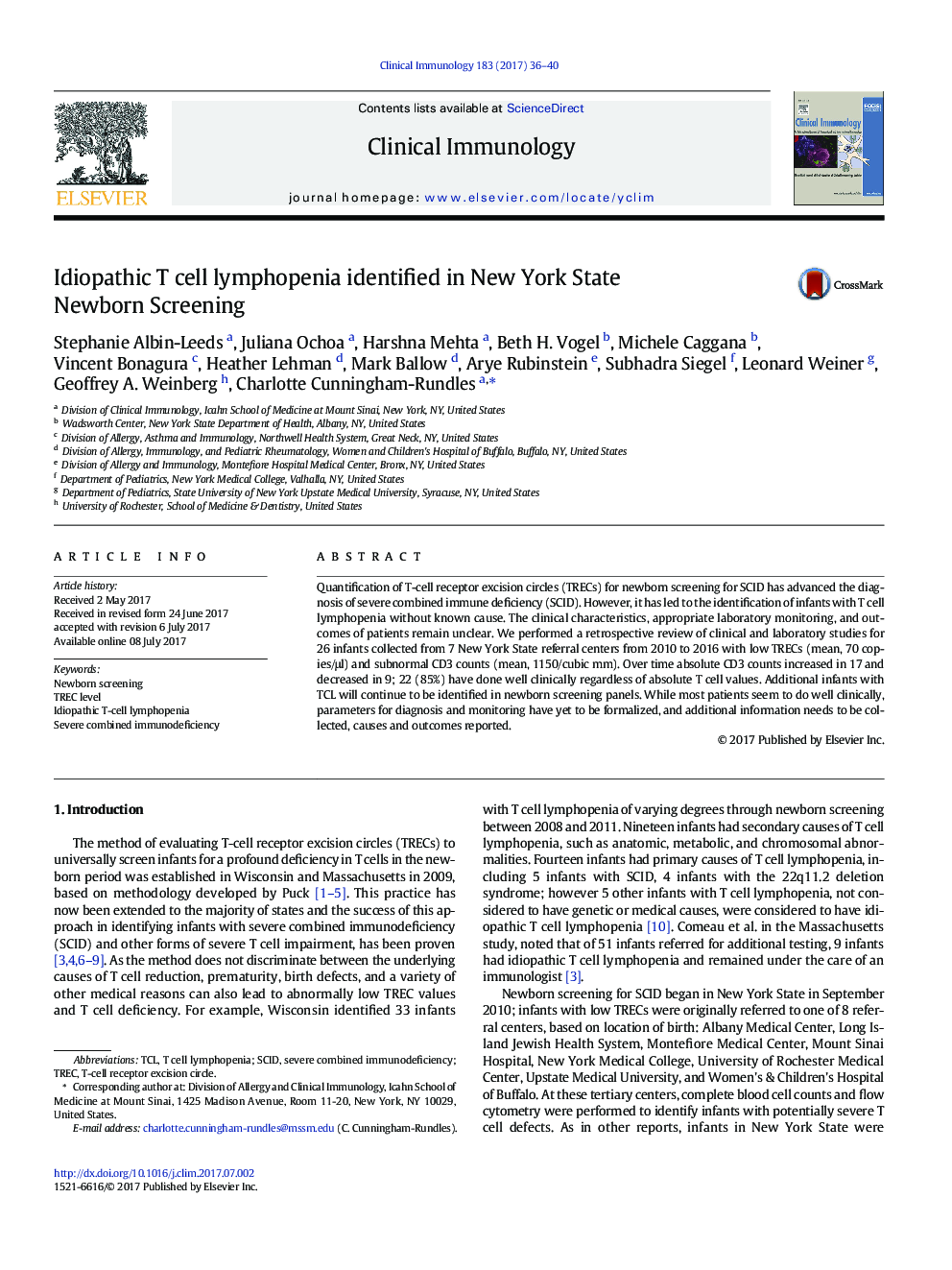| Article ID | Journal | Published Year | Pages | File Type |
|---|---|---|---|---|
| 5654799 | Clinical Immunology | 2017 | 5 Pages |
â¢The TREC assay identifies newborns with SCID and other severe T cell defects.â¢Occasional infants with idiopathic lymphopenia are also identified.â¢Idiopathic lymphopenia is poorly understood and does not resolve in all infantsâ¢While most infants with idiopathic lymphopenia do well clinically, persistent medical problems occur in some.
Quantification of T-cell receptor excision circles (TRECs) for newborn screening for SCID has advanced the diagnosis of severe combined immune deficiency (SCID). However, it has led to the identification of infants with T cell lymphopenia without known cause. The clinical characteristics, appropriate laboratory monitoring, and outcomes of patients remain unclear. We performed a retrospective review of clinical and laboratory studies for 26 infants collected from 7 New York State referral centers from 2010 to 2016 with low TRECs (mean, 70 copies/μl) and subnormal CD3 counts (mean, 1150/cubic mm). Over time absolute CD3 counts increased in 17 and decreased in 9; 22 (85%) have done well clinically regardless of absolute T cell values. Additional infants with TCL will continue to be identified in newborn screening panels. While most patients seem to do well clinically, parameters for diagnosis and monitoring have yet to be formalized, and additional information needs to be collected, causes and outcomes reported.
